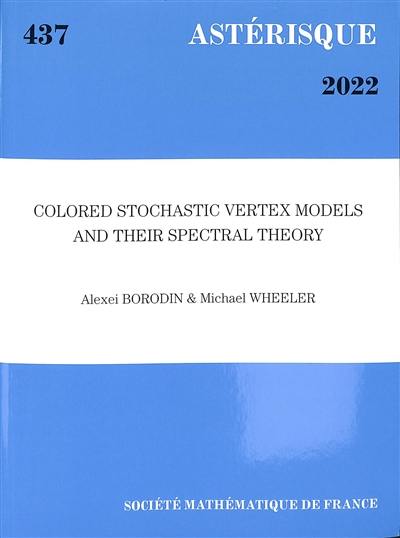Quatrième de
couverture
This work is dedicated to sln+1-related integrable stochastic vertex models ; we call such models colored. We prove several results about these models, which include the following :
- We construct the basis of (rational) eigenfunctions of the colored transfer-matrices as partition functions of our lattice models with certain boundary conditions. Similarly, we construct a dual basis and prove the corresponding orthogonality relations and Plancherel formulae.
- We derive a variety of combinatorial properties of those eigenfunctions, such as branching rules, exchange relations under Hecke divided-difference operators, (skew) Cauchy identities of different types, and monomial expansions.
- We show that our eigenfunctions are certain (non-obvious) reductions of the nested Bethe Ansatz eigenfunctions.
- For models in a quadrant with domain-wall (or half-Bernoulli) boundary conditions, we prove a matching relation that identifies the distribution of the colored height function at a point with the distribution of the height function along a line in an associated color-blind (sl2-related) stochastic vertex model. Thanks to a variety of known results about asymptotics of height functions of the color-blind models, this implies a similar variety of limit theorems for the colored height function of our models.
- We demonstrate how the colored/uncolored match degenerates to the colored (or multi-species) versions of the ASEP, q-PushTASEP, and the q-boson model.
- We show how our eigenfunctions relate to non-symmetric Cherednik-Macdonald theory, and we make use of this connection to prove a probabilistic matching result by applying Cherednik-Dunkl operators to the corresponding non-symmetric Cauchy identity.
